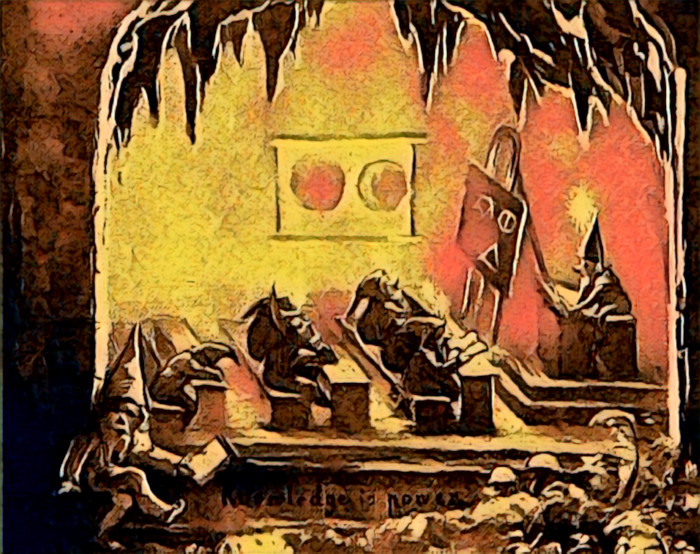
When organizing an RPG corebook a tension typically arises between its two roles as a tutorial document and a reference guide. The perfect organization remains an impossible ideal, perhaps humming along on some Platonic plane but not in this reality. Learning and playing an RPG isn’t nonlinear, in that you start doing it and eventually wind up having done it. But the line you and your group follow winds up being different from anyone else’s.
With that in mind I broadly structure GUMSHOE core sets to follow the players’ experience of the game, then move on to material both players and GMs need, and finally to GM-only sections, including setting, GM tips, and the intro scenario. Within each section, however, I follow reference guide principles. So you get all of the combat rules together, in an order roughly patterned on the way a fight plays out. But within that, sections are also ordered in conceptual order. This means that if subsystem H requires the use of core rule 3, that core rule has to appear before the subsystem. (Sometimes I’ll tuck a needed but infrequently used subsystem in an appendix, where it isn’t looking all complicated and confusing in the main body of the rules.)
Whatever the book structure, it’s not what happens when a GM teaches the game to others.
If I got to choose how everyone does it, I’d recommend keeping rules explanation to an absolute minimum until needed in play, with the following stages:
1. general intro to the setting, core activity, and, if unfamiliar to the group, the basic style and ethos of the rules set. (“You play ultra-competent occult investigators who fight an occult conspiracy on behalf of an international secret agency. It uses GUMSHOE, rules tuned specifically for investigative storytelling.”)
2. character generation, focusing on player choices, with only the rules details needed to understand the choices before them. (“These are your investigative abilities, which you use to reliably get information when you look in the right place. The numbers next to them provide special benefits beyond that, which I’ll explain in play.”)
3. the first scenario, with rules explanations supplied when they come up. (“Okay, this is one of the general abilities we talked about earlier. You’re rolling a six-sided die, hoping to hit a target number, usually 4. You can spend any number of points from your pool to increase the chances of success.”)
When players ask questions during character generation, answer until they’re satisfied. They’re probably not looking for the whole spiel. In most cases you’ll find they’re focused on imagining their characters and aren’t primed to also fully absorb even the comparatively simple rules found in GUMSHOE.
This way they don’t feel overwhelmed with information, and get to reserve their attention to the creative side of character generation. When the time comes to use a rule in play, it’s more likely to stick. You’re demonstrating it by example, with an attached emotional resonance from the story situation.
This method also allows learning in short bursts, also a key to memorizing abstractions.




